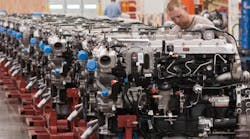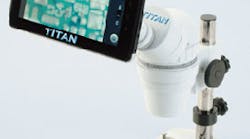Positron Systems has been awarded a Phase II Small Business Innovative Research grant from the National Science Foundation to develop an induced positron annihilation system for inspecting titanium and nickel-based alloy castings during manufacturing, in collaboration with a aircraft engines and structural airframes castings and forgings manufacturer.
To date, Positron has been awarded $446,385 in grant money for this project, and it says research will begin immediately at its test and analysis center in Pocatello, ID. Positron is supplier of advanced nondestructive material characterization testing systems.
The IPA process involves penetrating materials with a photon beam generated by a small linear accelerator (or other techniques) to create positrons. These postrons are attracted to “nano-sized” defects in the material, and eventually they will collide with electrons in the material. At that point the positrons are destroyed, releasing energy in the form of gamma rays.
The gamma ray energy spectrum creates a distinct and readable signature of the defects or damage present in the material. Positron Systems says IPA can detect various types of damage in metals, as well as in polymers, ceramics, and composites. And, because IPA examines materials at the atomic level, it can detect damage at its earliest stage, from initial manufacture through failure. The technology can also detect damage in second-layer materials and may be useful at determining the remaining useful life of a component, according to Positron Systems.
The aerospace industry is the largest market for titanium products The light metal has the ability to withstand the structural support demands and high-temperature applications required by jet engines and spacecraft. Positron says the IPA system may advance testing used to inspect titanium and nickel-based alloy castings during manufacturing significantly, by finding anomalies and defects that other testing methods cannot. If so, it would improve the quality of the castings quality and lower manufacturing costs by reducing or eliminating some inspection steps.



